 |
Hardware-test reports: photo- and scanner accessoires
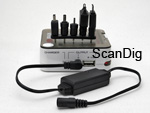
The reachargeable batteries/accumulators and chargers increasingly dominate our daily live. No matter if the electronic device is a mobile phone, a MP3-player, a GPS navigator, a telephone or simply the remote control for TV and Hifi devices, they all get really comfortable by the use of high quality rechargeable batteries that provide energy for a long time. In our page about rechargeable batteries/accumulators, we first introduce you to some important basics about rechargeable batteries and chargers as their structure, the chemical composition, the memory effect or the deep discharge. Then we introduce you in detail to some standard chargers for the normal rechargeable batteries and some special chargers. We also show you how to replace the original batteries of the digital cameras or camcorders by some cheaper models of other producers.
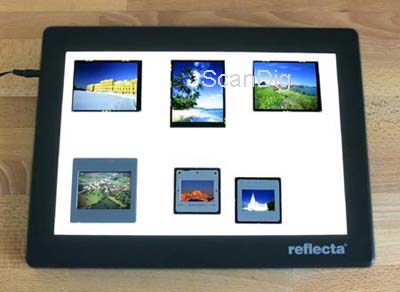
Those who regularly handle all kinds of film material (frames 35mm slides, medium format strips, X-ray images, etc.) will not be able to avoid using a stationary or a portable light panel. While the private person simply holds a framed 35mm slide aganst the window light from time to time in order to recognize the image motif or the orientation, the semi professional and professional photographers and of course also the photo agencies operate with some large light panels in order to, for example, choose the right image out of a series. Even those who want to choose the best images out of a slide collection for the digitalization of them will accomplish this in the most easy way by the use of a light panel. We show you some light panels of dofferent producers and of different sizes, from the portable mini light panel up to the stationary, huge light panel.
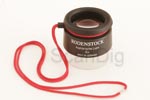
For hobby photographers and image processors, in the printing industry or photo agencies they are the tools of daily use: Magnifiers for the exact visualization, magnification and verification of transparent and no transparent material (e.g. paper photos, print outs and slide or negative films). But there are also other handcraft and industry sectors using magnifiers, many times specially adapted to the special tasks of detailed appraisal. If in the households, many times just a magnifier (reading lense) is kept in the drawer, the watchmakers, stamp collectors and the industry for example apply some optically and technically high quality magnifiers that have been made specially for their purposes. First we introduce you to very important quality criteria for the choice of the suitable magnifier and then we describe in detail numerous models of different structures and different producers.
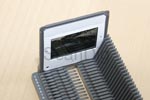
Even if the digital photography is displacing more and more the well tried analog photography, each year, still millions of slides are exposed and framed. Many a photographer does not plan the switch from analog to digital for the next ten years and many of them even do not plan it at all in this live. Due to this reason, the framing of the slides is still "in" and is accomplished millions of times. We first introduce you into the CS-framing system and get then into the framing of the slides. Thereby, we compare different framing systems: the manual framing and the automatic framing of CS-frames and/or CS2-frames. We also compare the required times for the the different framing systems.
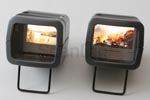
For the slide photographers, the employment of the slide viewer for the sorting of slides and the sorting out of the useless pictures is a thing of their daily life. Many owners of slide trays did not need a slide viewer since long ago. Not before the event of digitalizing one´s slide collection, a slide viewer is required in order to view through the existent slide collection and to sort out those slides that should be scanned. A slide viewer also serves as a colour comparison between the scanned image and the original one. In our page about the slide viewers, we first have a look into the different structures of the slide viewers and then we introduce you in detail to some slide viewers of different producers.
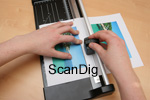
While in former times a cutting machine was a typical utensil in the copy room of middle sized and larger companies, today, there are increasingly cutting machines in small offices and private households. The reason for this is that the modern ink jets and photo printers provide such a good print quality that one can print out many things by oneself as for example some prints, information sheets or flyers in highest quality. Only the cutting out of the printouts with the scissors is a thing in which the resulting product is of a poor quality. With a cutting machine, one cuts in a fast and safe way and, what is more important, straight. In our page about cutting machines we explain what there is to consider in the purchase of a cutting machine. Moreover, we introduce you in detail into several cutting machines specially made for the photography sector.
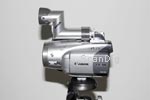
In our page about camcorder accessoires we introduce you to some useful accessoires for camcorders and video cameras. One of the most important tools for the creation of video films with the help of a camcorder is a video lamp, as most of the times, the integrated lamp is much too weak and/or because the camcorder does not have any lamp at all. We introduce you to two models of the firms Reflecta and Kaiser and show the practical employment of the clip-on video lamps. Numerous photos illustrate how a video lamp is fixed to a camcorder and how flexible it is possible to work with the modern video lamps.
|
 |